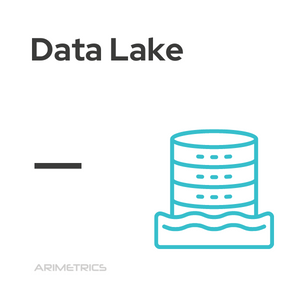Definition:
Data Lake is a data storage technology that allows users to save any type of data, structured or not, in its original form. It combines the power of cloud storage with the flexibility to store raw data. It allows users to retrieve and analyze their data at the right time, offering a scalable solution for businesses that need access to huge amounts of heterogeneous data. It also allows users to store large volumes of data without losing the original structure, allowing them better understanding and analysis.
What are the benefits of a Data Lake?
Data Lakes offer a variety of benefits, including:
- Greater flexibility: It allows users to store large amounts of structured and unstructured data without losing the original structure they had, facilitating deeper analysis, faster data retrieval, and improved data management.
- Increased efficiency: It simplifies the process to get the results the user wants. Data Lake helps those users organize and manage their data more efficiently, reducing the time it takes to retrieve and analyze their data.
- Increased scalability: It is a scalable solution that allows companies to recover and analyze large volumes of data without any problems. It also offers the ability to add new data types or more complex processing to improve efficiency.
Differences between Data Lakes and Data Warehouses
Data Lakes and Data Warehouses are two different types of data warehousing. Data Warehouse is a system designed to store large amounts of structured data in a single location. Data Warehouse uses a hierarchical storage model to organize data into tables and specifies how it relates to each other.
Data Lake, on the other hand, provides the flexibility to store raw data in its original form. It allows users to collect and store data from different sources without needing to transform it beforehand. And they also offer greater scalability than Data Warehouses, allowing them to handle large volumes of data without losing performance.
How to get the most out of your Data Lakes
Data Lake is a powerful technology that offers users many advantages such as flexibility, efficiency and scalability to facilitate data recovery and analysis. However, to get the most out of it, it is important that users implement a good strategy.
First, users need to make sure they choose the right Data Lake solution for their needs. It is available on different platforms, such as Hadoop, AWS and Azure. Users should also ensure that their data lake supports raw data storage and interoperability between systems.
In addition, it requires a proper lifecycle strategy to ensure that data is stored, managed, and processed correctly. You need to follow a logical storage plan, so that users can quickly retrieve the necessary data at the right time. Proper data lake management also helps reduce the risk of data loss or corruption.
Ultimately, it’s an incredibly useful tool for collecting and storing large amounts of raw data. It gives users the flexibility, scalability and efficiency they need to get the desired results. However, it requires a proper strategy to get the most out of Data Lake. Users must choose the right Data Lake solution for their needs and follow a robust lifecycle plan to ensure secure and efficient data storage.
